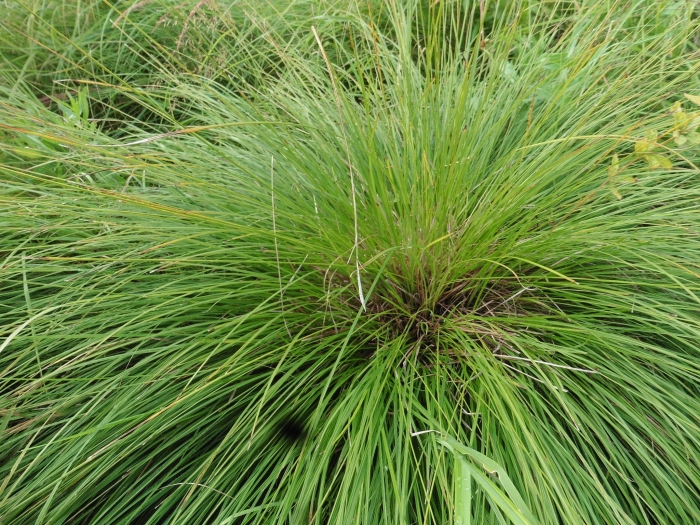Hassock-Grass
(Carex cespitosa)
Hassock-Grass (Carex cespitosa)
/
/

Силаева Татьяна Борисовна
Public Domain
Image By:
Силаева Татьяна Борисовна
Recorded By:
Copyright:
Public Domain
Copyright Notice:
Photo by: Силаева Татьяна Борисовна | License Type: Public Domain | License URL: http://creativecommons.org/publicdomain/zero/1.0/ | Rights Holder: Силаева Татьяна Борисовна | Publisher: iNaturalist | Date Created: 2021-07-27T15:51:12-07:00 |

































Estimated Native Range
Summary
Carex cespitosa, commonly known as Hassock-Grass, is an evergreen perennial sedge native to wet meadows, marshes, and the edges of water bodies in Eurasia and Russia. It typically forms dense tufts or clumps and can reach a height of 20–50 centimeters (8–20 inches). The plant features green, grass-like leaves and inconspicuous brownish flowers that appear from May to June. Hassock-Grass is valued for its ability to thrive in wet conditions and is often used in rain gardens, wetland restoration projects, and as a ground cover in moist garden areas.
Hassock-Grass is appreciated for its low maintenance and adaptability to very moist soils, making it suitable for areas where many other plants would not survive. It can be grown in full sun to part shade and requires high amounts of water, reflecting its natural preference for wet habitats. While not known for showy flowers, its evergreen foliage provides year-round interest. It is also used for erosion control due to its dense growth habit. Gardeners should be aware that in ideal wet conditions, it can spread vigorously, potentially becoming invasive in some areas.CC BY-SA 4.0
Hassock-Grass is appreciated for its low maintenance and adaptability to very moist soils, making it suitable for areas where many other plants would not survive. It can be grown in full sun to part shade and requires high amounts of water, reflecting its natural preference for wet habitats. While not known for showy flowers, its evergreen foliage provides year-round interest. It is also used for erosion control due to its dense growth habit. Gardeners should be aware that in ideal wet conditions, it can spread vigorously, potentially becoming invasive in some areas.CC BY-SA 4.0
Plant Description
- Plant Type: Grass
- Height: 1-2 feet
- Width: 1-2 feet
- Growth Rate: Moderate
- Flower Color: N/A
- Flowering Season: Spring
- Leaf Retention: Evergreen
Growth Requirements
- Sun: Full Sun, Part Shade
- Water: High
- Drainage: Medium, Slow
Common Uses
Bird Garden, Deer Resistant, Low Maintenance
Natural Habitat
native to wet meadows, marshes, and the edges of water bodies in Eurasia and Russia
Other Names
Common Names: Tue-Star, Rasen-Segge, Mätässara, Tuestarr, Polzegge, Tuvestorr, Tuvstarr, 포기사초
Scientific Names: , Carex cespitosa, Carex caespitosa, Vignea caespitosa, Carex caespitosa var. waisbeckeri, Carex caespitosa f. major, Carex caespitosa f. retorta, Carex caespitosa f. acutiuscula, Carex caespitosa f. polystachya, Carex caespitosa var. inumbrata
GBIF Accepted Name: Carex cespitosa L.